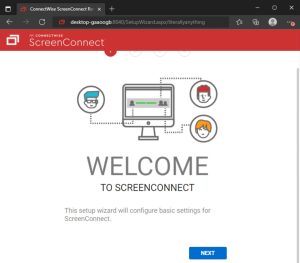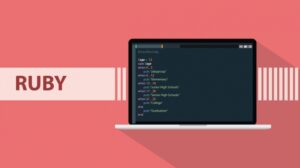One Rhode Island university has transitioned nearly seamlessly into remote learning. Here’s how they did it safely and effectively.
TechRepublic’s Karen Roby talks with Dr. Nancy Schreiber, provost and vice president for academic affairs, and Irving Bruckstein, CIO, of Salve Regina University in Rhode Island, about the process of switching to online learning during the COVID-19 pandemic and the security concerns that come with students learning from home.
SEE: Coronavirus: Critical IT policies and tools every business needs (TechRepublic Premium)
Nancy Schreiber: It really has been remarkable. We had 16 days, and we converted 817 undergraduate courses and 90 graduate courses to a remote learning environment. Part of our success besides what we’re going to talk about today, the incredible collaboration with IT, our faculty in this particular university community is small, and that really helped us be adaptive and flexible. We really went to our faculty and said, “This is what we’re going to have to do. Here are some tools and some resources and some support,” and they delivered. It’s remarkable because we are a traditional residential liberal arts institution and we had no online courses at the undergraduate level. People talk about the speed at which higher education changes, well, we’ve sort of proven them wrong in 16 days. We’ve been able to really, really ramp up and really help our students adjust to what professional life is going to look like. Because, look at all the professional folks right now having to pivot themselves at home.
Karen Roby: Irv, talk a little bit about the technology side of things, transitioning so quickly to e-learning.
Irving Bruckstein: The only reason we’re able to be so successful is because of the tremendous partnership between IT, and the provost’s office, and the entire faculty body. We had some good foundational technology in place that we had to very rapidly scale up. Our learning management system is Canvas, which is hosted in the cloud. For synchronous learning, we transitioned our video conferencing tool, which is a very secure and highly scalable tool from Cisco, Webex, to use for synchronous learning. Then we worked individually with various academic departments who had unique needs. We had to be creative. Our rule was very simple: Not a single student, faculty member, or administrator would be left behind as we transitioned to virtual Salve.
We took our entire IT staff, and we repurposed them. They were all on the front lines to assist with transition of students and faculty. That turned out to be a very tiring two-week effort. We literally worked around the clock, but we managed to get everyone online before we resumed our classes [for] the spring semester. Two fundamental tools, as I said, were Webex and Canvas LMS. And for secure access to our on-premises data center we used a VPN technology from Cisco Systems. For cybersecurity, which was a real critical component, one of our foundational tools is Darktrace. We have the entire suite of Darktrace here at Salve Regina, so we’re using it for intrusion detection, intrusion prevention, as well as the new Antigena Email offering, which proved quite pivotal in allowing us to counter the change in the cyber threats that we experienced when we transitioned to a remote mode of operations.
Karen Roby: With so many people online at home now Irv, how do you get the message out about security issues like phishing attempts and things like that?
Irving Bruckstein: We’re very fortunate that we have a very robust cybersecurity defense as well as incident response plan here. We use a layered mechanism of defense to protect our on-campus environment. It’s gotten to the point that that is so good between our firewalls, our internal monitoring tools, that most of our biggest threats now are the phishing attacks that we get. These are what I categorize in the broad topic of social engineering because the cybercriminals can’t get into our on-premise environment very easily. They take to tricking our user community into giving up their credentials, their passwords, their login, their IDs, other personally identifiable information so that they could then break into their accounts.
SEE: VPN: Picking a provider and troubleshooting tips (free PDF) (TechRepublic)
Some of the tools that we’ve used to inform our community in advance of this transition is a tool called KnowBe4. We use that to actually pretend that we in IT are the cyber criminals trying to phish our community. That goes a long way for raising awareness of folks that will click on the link. Other mechanisms that cyber criminals will use now that some organizations like Salve are very hardened, is they’ll actually come onto your campus and try to attack you from inside. They’ll leave malware on a key fob, and drop it on a cafeteria table.
We simulate those types of activities to see how our community responds. Anyone that takes a malicious fob and inserts it, anyone that clicks on one of our links for phishing, we will then bring them all together and give them an informational session to make them aware of what they did. That training has proven to be very valuable, but still nothing is foolproof. And as we’ve transitioned now to people working from home, they don’t necessarily have the benefit of a very tightly configured machine that they would get if they were using a university computer. Not everybody is issued one. That has resulted in some machines that were compromised now accessing our secure network through our VPNs.
Fortunately, Darktrace has performed very admirably for us. That has a machine learning, artificial intelligence engine that baselines our environment. It understands what normal behavior is and what abnormal or risky behavior is. Because the cyber criminals are getting very sophisticated in using automated tools to attack, having a tool like Darktrace is the only way you can counter that. As we shifted to the new mode of operation with people being remote, our Darktrace system basically re-baselined us almost in real time, very quickly gave us the ability to have the same functionality that we had when everybody was working on campus.
Also, as we transitioned, we turned on the Antigena Email engine, which was really crucial. So with Antigena Email, it will observe how everyone in our environment that’s in its field of view, writes. It’ll look at writing styles and say, “OK, I understand how Irv writes his emails.” So, if you were to try to impersonate me, it would know that I didn’t actually write that email. That would allow that to be flagged and actually not be presented out to our community. Having a layer defense of tools, Darktrace being a key foundational element, really positioned us quite well for maintaining cybersecurity within our environment as we transitioned. Also, having had pre-prepared for having good incident response, we followed the NIST Framework and we’ve also just completed our affirmation process for being compliant with the Gramm-Leach-Bliley Act. All of that preparation really paid off big time for us as we transitioned to the virtual Salve.
SEE: Online education toolbox: Tips and resources for distance learning (free PDF) (TechRepublic)
Karen Roby: From your perspective Dr. Schreiber, what have been the biggest challenges to overcome during this?
Nancy Schreiber: I think we have a very rich community here, rich in the sense of connections and relationships. And when you move remotely, of course you fear losing that intimacy, that ability to obtain faculty mentorship, to do research, to do all the things that we can do so well in a small environment here in Newport, RI. And so, that was our biggest fear. And we built virtual Salve not just with an academic component, but with a co-curricular component. So, Irv’s shop has had to manage not just the academics, but all kinds of co-curricular activities and events that we’re putting online.
We’ve tried to replicate the personal feel of this campus remotely, which is challenging. We’ve done it differently than most universities. Most universities have just said, “Oh my gosh, we’ve got six weeks left of the semester, let’s throw these courses online and get through it.” That has not been Salve’s approach because it’s not who we are as an institution. We’ve really tried to really remotely put the campus, if you will, online. I think we’ve gotten incredibly positive feedback from the vast majority of our students on both our efforts to do this as well as the kind of learning that they’re engaged in right now. I would say that the need for continuous improvement is really in the connection. We’ve got some faculty who are more senior in their careers and aren’t comfortable with technology and treat it a little bit less synchronously than perhaps we would like because we feel the synchronous allows for that connection and that relationship building a little bit better than asynchronous.
All in all, it’s been a great experience. Our students have had empathy for our faculty. I get notes saying, “Thank you so much Dr. So-and-so because I know how much work this is for you.” We really have a great story to tell. It’s not without bumps. But we also know that we’re not done with this, and we are in the midst of planning all the various scenarios for next year because we know sadly that COVID-19 is not going away. I kind of hold it up to some of the values that we want to give our students, which is resiliency, preparation for adulthood, and managing in a crisis, and I think that we’ve really come together as a community to do that here.
SEE: Top 100+ tips for telecommuters and managers (free PDF) (TechRepublic)
Karen Roby: I’m sure you have people asking you all the time and sending you emails saying, “Is this going to be our new normal? Is this what we can expect?” I’m sure there’s uncertainty all over the place here right now, what things are going to look like. But do you see that this will be a good bit of what people can expect as they move into the fall semester?
Nancy Schreiber: We haven’t made the decision whether we’re coming back as a campus. We will be taking our lead on health and safety from the Department of Health of Rhode Island and our governor. But we are preparing because I don’t want to go back to the faculty with 16 days’ notice and say, “Oh, by the way, we’re not coming back.” So, we are preparing for all kinds of scenarios including hybrid learning.
Perhaps students come back and, unfortunately, we have to send them back home or, and very realistically, they come to campus and we sadly have folks that get ill and we have to quarantine them on campus and they can’t attend class. We are working with IT to help us develop some of those on-campus solutions for social distancing. Our optimism is that we will be back in the fall, but we will have social distancing requirements that are going to require adjustments that will help, again, to continue with the use of technology.
Also see
” data-credit=”Image: Mackenzie Burke” rel=”noopener noreferrer nofollow”>

TechRepublic’s Karen Roby talks with Dr. Nancy Schreiber, provost and vice president for academic affairs, and Irving Bruckstein, CIO, of Salve Regina University in Rhode Island, about the process of switching to online learning during the COVID-19 pandemic and the security concerns that come with students learning from home.
Image: Mackenzie Burke
Source of Article




